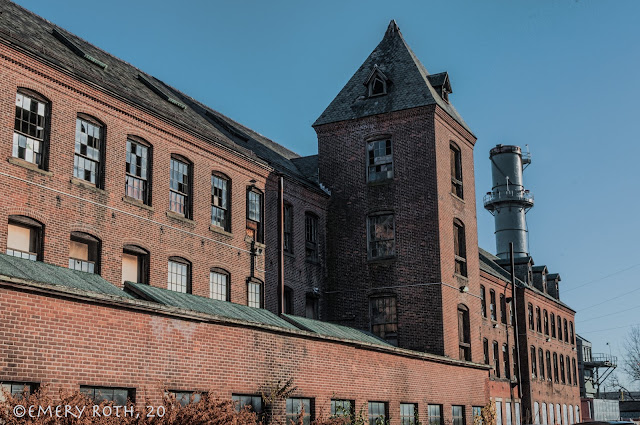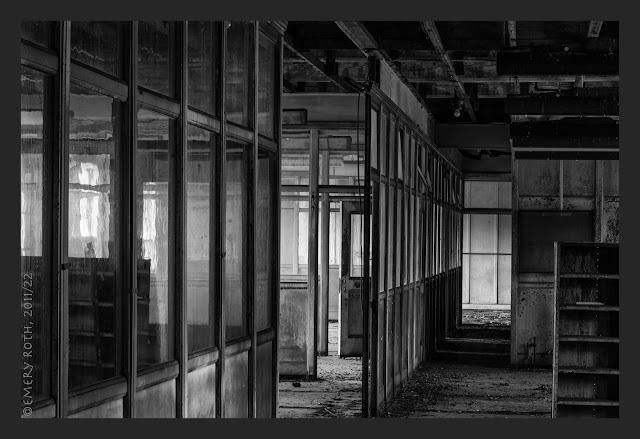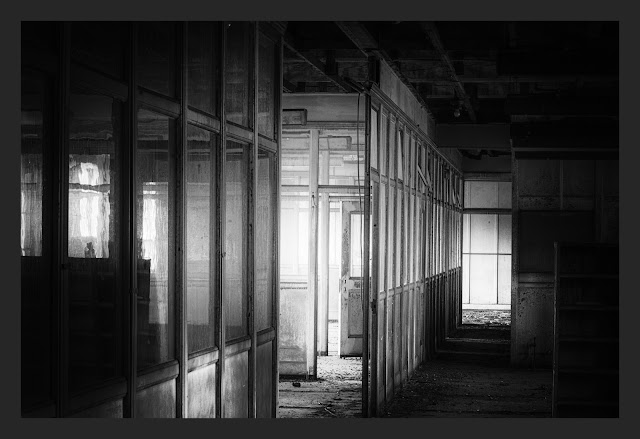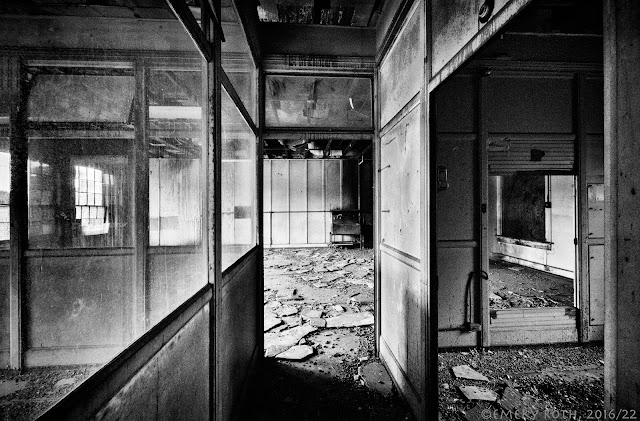 |
Holmes, Booth & Haydens Lampworks, 2011 (from the southwest)
|
 |
Interior, western tower
|
 |
Interior, southeastern tower
|
Where
is the line between art and documentation? Labels. These photographs
fail to reach Minor White's "What else is it?" criterion except within
the prose of the whole experience. Yet I stopped often at that wheeled
hamper thinking how photogenic it was and then failed to shoot.
The
Lampworks, once connected to other brick buildings of its era, was a
survivior. The floors of the Lampworks were connected by two vertical
stair towers and a an industrial freight elevator that I never saw used.
The stair tower on the southeaster corner of the building, half-hidden
in the picture, had a simple pitched roof and contained doors fastened
shut that once led to buildings that had vanished and left no trace.
The
tower on the west side of the Lampworks had an elegant, 1880, pointed
Victorian, slate, tower roof with tiny dormers that were owned by the
pigeons, and it was all feathers and guano.
Brick
work at the northern end of the tube mill complex and a similar pointed
tower, just visible over the tube mill roof, is a reminder of buildings
that had stood between that were replaced around WW1 by the tube mill.
But that's all there is. Minor White properly asks what else might it be?


.jpg)





.jpg)
.jpg)
.jpg)





